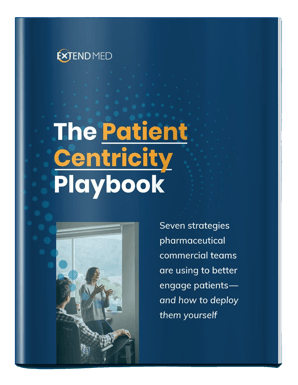Key opinion leaders (KOLs) are external experts, such as healthcare providers, insurance professionals, patients, caregivers, and others who can share valuable expertise, opinions, and perspectives in managing a disease state.
KOLs play a critical role in assisting pharmaceutical, medical device, and similar companies in making informed decisions across the entire product lifecycle, including drug development, clinical trials, clinical research, regulatory compliance, and commercialization.
KOLs are sometimes defined narrowly as physicians specializing in, for example, a particular branch of medicine such as cardiology or rheumatology. However, the modern concept of a KOL has broadened to include just about anyone impacted by certain disease states. The technology available to help facilitate engagements at scale has made it far easier to engage with more and more diverse KOLs.
Both medical affairs and commercial pharma teams must generate and grow productive relationships with their KOLs to solicit meaningful, valuable insights from them. This process is KOL management.
Pharma teams risk mismanaging their KOL relationships if they don't define, plan, and execute all the motions of engagement thoughtfully. Poor KOL management can exact enormous financial and opportunity costs, and undermine or even derail drug launches while creating a host of compliance issues.
This guide explores all the key dimensions of modern KOL management.
- What is KOL management—and how does it work in 2025?
- Goal-setting, KOL identification, contracting, and KOL segmentation
- Insights gathering
- Insights analysis
- Post-engagement assessment and follow-up
- The number one challenge of KOL management
- The impact of successful KOL management
- ExtendMed for better KOL management
In 2025, pharma teams responsible for managing KOLs deserve a technology platform purpose-built to facilitate outreach, host synchronous and asynchronous engagements, and handle administrative tasks, like contracting and sunshine reporting—all from a single place.
With more and more pharma teams using these platforms, KOLs are coming to expect the conveniences they bring. Without such a tool, orchestrating a modern KOL program is incredibly burdensome and time-consuming, and can produce insights with less fidelity and business value.
Pharma teams partnering with ExtendMed maximize their KOL interactions at a fraction of the cost of traditional approaches. Read a few of those success stories here.
Talk to us if your team wants to explore a KOL management solution.

📄 Free White Paper
The Patient Centricity Playbook
Seven strategies pharmaceutical commercial teams are using to better engage patients—and how to deploy them yourself
What is KOL management—and how does it work in 2025?
In short, KOL management is the process of identifying and engaging external experts whose insights you need to collect to guide the development and commercialization of your pharmaceutical product.
KOL management can be broken down into a few broad components:
- Goal-setting, KOL identification, contracting, and KOL segmentation
- Insights gathering
- Insights analysis
- Post-engagement assessment and follow-up
Let’s briefly dig into each of these.
1. Goal-setting, KOL identification, contracting, and KOL segmentation
These four activities comprise the first phase of KOL management. Before your team can identify and engage KOLs, it has to set a clear objective for the specific insights it wants to solicit and what business actions those insights will inform.
This is goal-setting, and it’s vital to establish first to ensure everything that follows is in service of this goal.
Setting a clear goal also makes identifying the KOLs much easier. If, for example, your goal is to understand the patient's perspectives at a particular stage of a disease, you’ve already described who you need to engage (in this case, patients in that stage of the disease).
“The first key part of KOL management is having a specific tactic to pursue. It’s a clearly-stated objective articulated to identify who your opinion leaders are going to be and who can answer the questions you have in front of you.”

— Amy Ravi, CEO, ExtendMed
💡 Case in point
Here’s a simple example demonstrating how a clear goal can inform the subsequent steps of KOL management.
Imagine you’re bringing a new pharma product to market to aid in breast cancer treatment. The patients that respond best to your product have a particular gene. Knowing whether or not a patient has that gene requires a genetic test.
Here, we can articulate a clear goal: Our objective is to determine at what point and how best to include genetic testing in an oncology practice treating patients with breast cancer.
We can immediately identify the KOLs we need and how to segment them to serve this goal. In this case, we’d be engaging specific oncologists who will ultimately order those tests. We’d also be identifying insurers who need to cover those tests to understand what information will motivate them to provide coverage. This exercise can continue to identify types of patients and perhaps others involved in this type of treatment.
Once you establish your objective, several questions emerge that help you identify your KOLs.
Here are a few critical ones:
- What groups do you need to solicit to get the insights you need to accomplish your objective?
- Are there groups who act as influencers to these primary groups, and how could you bring them into the discussion?
- Would it be best to talk to those groups separately or together? (Perhaps there’s a benefit to having, for example, healthcare providers together with insurers or patients with caregivers, given your objective.)
- What logistics are involved with reaching out to, and ultimately contracting with, these KOLs? Are there any specific roadblocks you can anticipate based on who you’re targeting? If so, what’s your strategy for navigating those challenges?
This last question segues into the next step of this first phase of KOL management: contracting.
The critical question your team needs to address here is how specifically to set up those contracts based on the course and format of engagements it is planning.
- In other words: how long will your contracts need to be—and what will they need to include—to get the information you need based on how you plan to engage?
Say, for example, you want to engage a group of KOLs annually through a series of questionnaires, asynchronous discussions, and synchronous meetings. In this case, you’d need to determine what components the contract must include ensuring KOLs are contractually committed to participating in each activity. This is the logistics of contracting, and getting it right matters a lot. It’s something we routinely help pharma teams with as they evolve their KOL programs. We’ll discuss planning engagements in more detail in the next section.
ExtendMed's Health Expert Connect™ platform at a glance
Watch a couple of our demo videos and scroll through just some of the tools we unlock to facilitate modern, productive KOL engagements.






Lastly, during this initial phase, you may already find yourself considering some initial ways to segment the groups you’ve identified to be most effective against your goal. This is where you need to think carefully—ideally as a group—to consider how best to organize and operationalize your groups to get the types of insights you need.
For example:
- Is it best to segment and engage each group separately?
- Is it best to diversify your groups into sub-groups for more precise insights?
- Is it best to engage segments together to have multidisciplinary discussions?
Again, the key here is to let your goal determine how groups are established and engaged—either separately or together. Your objective should inform every tactical decision you make.
2. Insights gathering
Once you’ve identified and segmented your KOLs, and have contracts in place, it’s time to gather insights from them.
The following questions should be answered and reflected in your contracts:
- Are insights best solicited through a virtual advisory board or another format?
- Are in-person meetings needed or beneficial?
- Would it be advantageous to supplement synchronous meetings with an asynchronous discussion between them?
- Will you be collecting any quantitative data that you’ll want to share? If so, how will you get that data? Do you have a survey tool that’s useful here?
- Does the availability of your KOLs constrain how or when you can engage them?
- Have you addressed compliance in your engagement plan?
This list goes on and on.
If you’re looking for strategic guidance in putting a modern KOL engagement program together and executing it efficiently, talk to us.
For years, we’ve been helping pharma teams and their agencies navigate these decisions. Many of the most critical decisions aren’t always obvious, making a partner like ExtendMed extremely valuable for companies looking to follow emerging best practices.
See why pharma teams—and their agencies—are transitioning to virtual advisory board models: Top 9 Reasons to Hold Virtual Advisory Board Meetings
Before kicking off their engagements, teams need to sit down and carefully compare what they need to get from KOLs against their timeline. Teams should be able to come out of their planning phase able to say something like this:
“Based on our timing, we need to do X, Y, and Z over the next eight months. Therefore, we will plan a synchronous virtual meeting to introduce everyone and then follow up with a series of asynchronous discussions. To have that discussion, we’ll need some quantitative data, so beforehand, we’re going to send our KOLs these ten questions via an online questionnaire."
Executing your engagements should be straightforward if you’ve planned sufficiently and have a platform enabling you to efficiently facilitate each motion. The execution will look different from one team to the next. However, here are a few best practices to keep in mind no matter how you’re engaging:
Connect with stakeholders promptly—especially during follow-up.
In pharma, projects simply move too quickly to wait around for answers. By the same token, teams can’t sacrifice quality for quickness. They need both.
- Consider dedicating time for debriefing immediately following meetings—ideally online. (This is the only opportunity to get real-time feedback on the format and content of your discussions while it’s still fresh in your team’s heads.)
- Also, consider establishing a channel for soliciting input from KOLs on follow-ups. Follow-up questions shouldn't be locked away in a document to gather dust. Open a channel to ask those questions and allow convenient asynchronous engagement between meetings. This is where a dedicated engagement platform becomes critical, as it's difficult and cumbersome to paste together such a system on your own, much less manage it regularly.
Make discussion materials easy to disseminate and share.
Neither email nor file-sharing systems were built for highly managed, interactive asset sharing to multiple groups of people. As a result, pharma teams managing KOLs often spend their valuable time managing the management rather than getting to the substantive work.
It’s frustrating for both administrators and KOLs who are saddled with working in systems that often waste their time.
- Make sure your team is equipped to produce meeting recordings and concise reports covering the outputs of your meetings—and disseminate them.
Track engagement at the user level.
Tracking user activity, whether it’s consuming written materials, watching a video, completing a follow-up survey, or anything else, is an enormous value-add that virtual engagement platforms have over traditional on-site-only meetings.
But it’s also one capability that is next to impossible to have without a dedicated engagement platform. Resorting to conventional email to share materials can be particularly clumsy.
But beyond simply getting things out to people, traditional tools give you no way to track whether or not someone has opened something, let alone consumed or completed it. Pharma teams on both sides of the house that use ExtendMed’s platform get this user-level tracking across all of their programs.
Want more insight into these best practices and a few others? Read our other guide: Pharma Advisory Boards: 5 Best Practices for Better Engagement
3. Insights analysis
Once you’ve gathered raw insights from your KOLs, you need to analyze that information, pulling out the actionable themes and takeaways that enable you to accomplish your goal at the outset.
“Actionable” is the operable term here. What can you glean from all the insights you just gathered that inform tangible actions your company can take?
- Maybe that’s providing study data to insurers to show that your genetic test is vital in the course of care.
- Maybe it’s training oncologists to bring in genetic counselors at a certain point in managing a disease.
Here again, the value of a KOL engagement platform can’t be overstated. It can be challenging, if not impossible, to manually comb through meeting transcripts, emails, physical notes, survey data, and every other store of information to try to tie everything together and extract key themes.
Teams using ExtendMed’s platform let AI-powered analysis do much of the heavy lifting here, taking in everything you’ve collected and producing actionable reports and summaries faster and more completely than human teams could be expected to.
4. Post-engagement assessment and follow-up
KOL management doesn’t end once those initial actions are taken. The results of those actions need to be assessed and potentially acted on again.
- Can you measure the success of those actions?
- Is there any iteration step that needs to happen?
If, for example, your engagement program resulted in physicians doing additional genetic testing with certain patients, now is the time to go back and ask those stakeholders, "Are you getting the outcomes you wanted?”
Perhaps it turns out that genetic tests alone don’t improve outcomes but need to be coupled with something else. Maybe patients need to be put onto or taken off a particular medication. These are the types of questions that can inform iterative steps of improvement.
“If you’ve designated someone as an expert, and they’ve participated in an engagement program, they’ve likely given you feedback on, for instance, some of the hardships of their practice or their interest in taking specific clinical actions in how they treat patients. Maybe a necessary diagnostic test is infeasible at the moment because their patients aren’t covered for it, so it’s not a priority.
Now that you’ve taken that insight and acted on it, changes to the product and its coverage might have changed that calculus, and it’s time to revisit it in light of those changes. Perhaps insurance is now covering 80% of the testing costs. Maybe your organization has since worked with the hospital to integrate testing into the treatment plan. Now is the time to return to your KOLs and ask, ‘How is that going now? We heard you, we acted, and now things have changed. How is that impacting you now, and what, if any, new challenges have emerged?’”

— Amy Ravi, CEO, ExtendMed
The number one challenge of KOL management
There are, of course, all kinds of challenges that can arise when managing KOLs. But many, if not most of them are symptoms of a deeper, central problem: a lack of tools for facilitating engagements and managing administrative tasks.
Without a dedicated technology platform that offers tools explicitly built for KOL management, teams have to stitch together a "franken system" comprised of disparate systems that seldom integrate and make management slow, arduous, expensive, and the opposite of user-friendly.
Ultimately, the quality of the insights suffers, and teams waste valuable time toiling across systems and trying to connect the dots themselves. KOLs can become frustrated with all the friction imposed on them. With many pharma teams using platforms to deliver greater convenience to experts, many KOLs now expect this, leaving teams without platforms at a competitive disadvantage when asking for their time and attention.
To further unpack this challenge, let’s explore how a lack of tools makes life harder for pharma teams and their KOLs at each phase outlined above.
Challenge: Goal-setting, KOL identification, contracting, and initial KOL segmentation
Without a platform for managing KOLs, step one can leave teams feeling overwhelmed and stuck. You may know your objective but don’t have a way to find or engage experts in a timely manner while avoiding a compliance nightmare.
Once you find those experts who could provide answers, you don’t have a tool or platform to offer that would make participation convenient. You can’t wait a year until the next annual conference they’ll attend. And similarly, they can’t take five days out of their practice to meet with you in person to answer your questions.
If you can give them an easy way to share what they’re passionate about, they're more likely to participate and give you their insights.
Solution
This is exactly what ExtendMed’s platform is purpose-built to do. Teams using ExtendMed get a uniform definition of the objectives.
Later on, keyword analysis tools can be used to pull out themes from meetings and other engagements related to those objectives. With everyone aligned on the objective, everyone can clearly understand why each choice was made and why each KOL was targeted.
Teams can routinely return to their objectives and ensure everything is measured against them.
Talk to us if your team wants to explore a KOL management solution.
Challenge: Insights gathering
Without a dedicated engagement platform, most teams don’t have a way to gather insights that makes it convenient for themselves and KOLs.
Without an engagement tool that’s built for KOL engagement, teams have to pick up the phone. They have to figure out a system to document their interactions. They have to wait eight months to get their questions answered at the next annual meeting.
Solution
Pharma teams using ExtendMed have all the tools needed to bring questions conveniently to KOLs. KOLs can engage on their time, whether that’s at 2 pm on a weekday or midnight on the weekend.
Teams can pick from various engagement methods depending on the preferred modality or group dynamic that suits their objectives.
Interested in inviting healthy debate or novel interaction between groups? Bring them together synchronously.
Dealing with a global group across time zones? Start an asynchronous discussion online and send your pre-reads ahead of time.
Need to gather more quantitative insights? Deploy a survey.
With everything managed from one platform, insights can be analyzed seamlessly from one method to the next.
Challenge: Insight analysis
Without tools that run insight analysis at machine speed, the data collected from your KOLs is just that: data. It’s up to you to turn it into something actionable. And paradoxically, without a tool that can do much of this work for you, the more information you collect, the more manual work you must do to get those insights out.
Simply put, a team that’s ill-equipped for analysis is hard-pressed to have a good answer to a key question: “What are we doing with the insights we generated?”
And similarly, they don’t have great answers to the many questions that follow from that:
- “How can we better document what’s being surfaced in these engagements?”
- “How can we distill raw information into the actual insights we can use?”
- “How can we share those insights across our institution?”
- “How can we make sure we’re following up with information people need?”
Manually reviewing meeting notes, transcripts, emails, survey results, questionnaires, and other places where engagement was documented is an enormous task. And trying to connect the dots across what could be many data points can be next to impossible.
“When it’s time to do something with all the data that’s been collected from KOLs, pharma teams can get overwhelmed with how much raw material is sitting in front of them.
Trying to manually cross-analyze hours of meeting transcriptions with, say, SurveyMonkey reports is not easy.
Just like basically every dimension of KOL management, having a dedicated technology tool that can analyze everything you’ve done and automatically pull out the key themes is a massive convenience.”

— Amy Ravi, CEO, ExtendMed
Solution
Since all documented engagements are facilitated from a single system, pharma teams using ExtendMed can perform cross-activity analyses and deliver those key takeaways in clear, actionable reports.
They take survey data and overlay it with insights from their virtual ad boards to see whether or not the same problems and themes are emerging. They can easily navigate and holistically understand the content produced across all the tactical components of their engagement over weeks, months, or even years.
Challenge: Post-engagement assessment and follow-up
Very often, pharma teams find themselves coming out the other side of their engagements wanting to go back to their KOLs saying, “tell me more!”
- Maybe a discussion topic emerged unexpectedly—and is actually critical—but there wasn’t time to dive into it during a meeting.
- Maybe survey results yielded a surprising or dramatic trend or sentiment, and your team wants to dig into it.
- Maybe a KOL made an eye-opening post on the discussion board, and you’d like to follow up to get more details.
- Maybe actions have been taken, and it’s time to return to your KOLs to see if those actions worked and what more may be needed.
Solution
With ExtendMed, the same tools that make it easy to gather initial insights from KOLs make it just as easy to re-engage those audiences—informing KOLs of steps your organization has taken based on the input received, learning the impact of those changes and what further steps can be taken toward further improvement.
It’s perfect for teams looking to take a more systematized approach to get feedback and address some of the changes needed across your segments.
The impact of successful KOL management
Improving your KOL management program isn’t something to put on the back burner.
Simply put, if you don’t have an effective mechanism for collecting insights your product development and commercialization efforts rely on, poor KOL management can quietly put an entire business at risk by undermining the development and commercialization of its product.
Healthcare is a complicated market and getting more so every day. Understanding all of the different perspectives and taking a multidisciplinary approach is key to understanding treatment from every dimension, including the perspectives of patients, providers, caregivers, insurers, and others.
Remember that the success of KOL management is felt by your team and your KOLs. Pharma companies get incredible ROI via insights, while KOLs get unique and highly valuable opportunities to interact with peers and hear unique points of view, especially from historically disadvantaged or de-prioritized stakeholders.
ExtendMed for better KOL management
ExtendMed helps your team connect, educate, and train global healthcare thought leaders, facilitate rich discussions with KOLs, and save administrative and logistical work hours on a simple, powerful expert engagement platform.
We partner with hundreds of pharmaceutical, biotech, and healthcare companies to engage KOLs in advisory boards, interactive training, and speaker programs more efficiently than alternative solutions. Our program outcomes influence key business decisions our clients make every day.
We know KOLs don’t deserve a one-size-fits-all approach to engagement. ExtendMed enables your team to employ a mix of methods to fit the needs and preferences of your audiences and give KOLs the venue they feel most comfortable sharing in.
“The pharma teams we partner with really value engaging a broader set of people that go far beyond healthcare providers alone. They can assemble a giant cross-section of groups impacted by a given disease state and give a voice to those who ought to be heard. This is one of the most exciting front lines of healthcare’s evolution.”

— Amy Ravi, CEO, ExtendMed
Simplify and strengthen your KOL engagement and medical education workflow with ExtendMed.
Since 2000, we’ve been helping leaders in the pharmaceutical, biotech, and device industries—as well as medical communications agencies, research, and education organizations—deliver the efficiencies and capabilities they need to focus on the work that matters most.
Our goal is to help you have richer and more frequent engagements with each of your stakeholders, at a lower cost. How long are you going to wait to solicit better insights across your programs?
Visit extendmed.com/solutions for a quick look at our solutions and how we empower teams to have richer engagements with each of their stakeholders. Want to get in touch with questions or schedule a free platform demo? Contact us.
📄 Want more food for thought? Check out our free white paper below and get seven strategies pharmaceutical commercial teams are using to better engage patients—and tips on how to deploy them yourself.

📄 Free White Paper
The Patient Centricity Playbook
Seven strategies pharmaceutical commercial teams are using to better engage patients—and how to deploy them yourself


